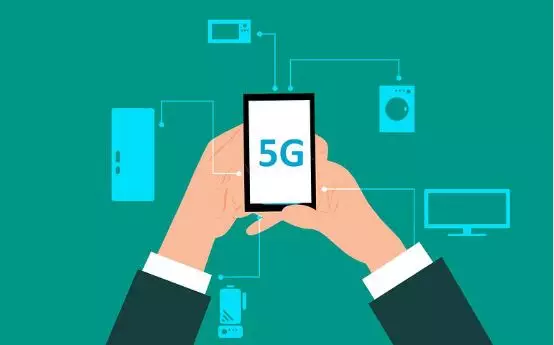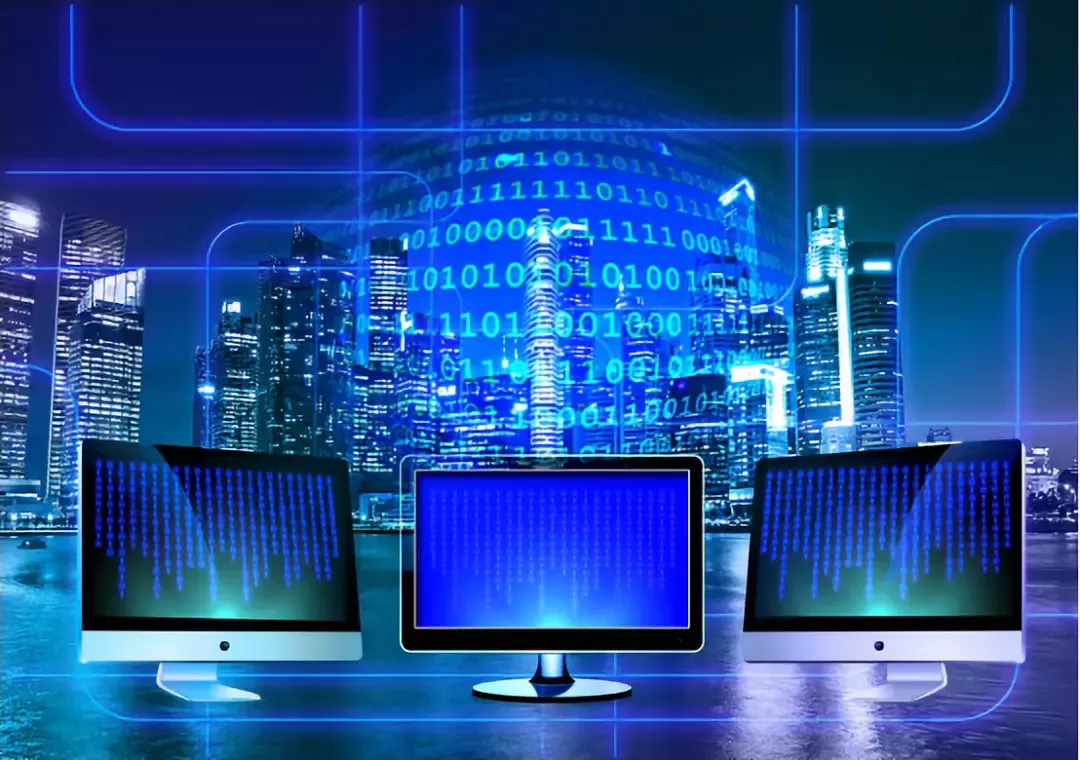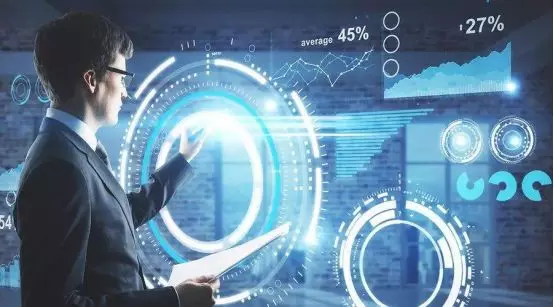In the 5G era, everything is on the chain
When it comes to 5G, the first reaction of ordinary people is that the Internet can be faster. This is a typical old thinking logic. It only looks at 5G from the interconnection between people. However, even if the world uses 5G Internet access, it is only 7.4 billion people.
The emergence of 5G is not limited to network speed, it will support concurrent connections of hundreds of thousands of nodes. Any device around you, up to a city, as small as glasses, buttons, can become a node of the Internet of Things, and without the need for human intervention between devices, you can use smart contracts to interact on your own… The scene in which each size object can “talk” itself is the “Internet of Everything”.

In the 5G era, connected devices will grow exponentially, and the market outlook is immeasurable.
- Was it up and was abandoned? Mike Novogratz: Selling Litecoin and buying Bitcoin
- Opinion: Is the CCID blockchain rating really reliable?
- Interpretation of the new SEC framework: How to make your own Token not classified as a "securities"?
Intensive terminal equipment will bring massive amounts of data and computing, while blockchain technology can better empower data. Li Xiaojia, president of the Hong Kong Stock Exchange, believes that the blockchain can carry out data validation, pricing, deposit and credit traceability.
Dong Ning, CEO of a company, believes that blockchain is a production relationship, which ensures the security and deposit of data on the chain; 5G is the infrastructure, the data path, the two complement each other, form a solution, and apply to different verticals such as the Internet of Things. field.
5G accelerates the arrival of the Internet of Things era
5G is the fifth-generation wireless communication system. It is not a single technology, but a solution to the improvement of existing communication technologies. In short, it is to use higher radio frequency (more load information), expand the occupied frequency band (wideband), increase the density of micro base stations, improve the computing performance of the equipment (inter-device communication, reduce base station pressure).
5G has not yet landed. Miao Wei, Minister of the Ministry of Industry and Information Technology, said at the Boao Forum in 2019 that this year, 5G licenses will be issued in succession depending on the maturity of terminal equipment.
GSMA expects that by 2025, 5G networks will cover 40% of the world's population, or about 2.7 billion people. For the average user, the biggest experience may be that the Internet access rate is faster, and it is possible to transmit virtual reality scenes that cannot be transmitted by 4G such as VR or AR.

The value of 5G goes far beyond this. Miao Wei believes that only 20% of 5G may be used for communication between people, and 80% may be used for communication between things and things, that is, "Internet of Things."
According to the White Paper on Internet of Things (2018) published by the China Institute of Information and Communication, the global Internet of Things market has grown from $50 billion in 2008 to nearly $150 billion in 2018.
The application scenarios of the Internet of Things are constantly expanding. From the smart home, car networking, smart wear and other C-side scenes to industrial Internet of Things, shipping logistics, etc., will be the main scene of the current Internet of Things.
Blockchain is the security guard of IoT data
From 2013, Changhong, a traditional home appliance manufacturer, began to explore cross-platform collaborative interconnection of home appliances and develop smart homes, smart communities and smart cities.
Tang Bo, head of Changhong Information Security Lab, told Zinc Link that with the advent of the 5G era, terminal equipment will directly access the WAN in a way that breaks through the LAN boundary. The traditional security protection mechanism based on the intranet boundary will be invalid, and the security boundary will be reconstructed. The daunting task.

In Changhong's smart business, the blockchain is gradually becoming the infrastructure for IoT security.
He believes that the application of cryptography, represented by blockchain, will reconstruct the security boundary for the Internet of Things, establish a trust domain between devices, and implement secure and trusted interconnection. At the same time, the key behavior information of the IoT terminal de-privatization is distributed, and distributed in each node of the blockchain to ensure data integrity and availability, and promote the construction of intelligent and coordinated security protection system.
In addition to the cryptography suite, the data collected by the IoT terminal is distributed and stored in the blockchain node, which prevents the data in the original central database from being tampered with, hacked, and even the central database to do evil. Waiting for the situation.
In addition to Changhong, Amazon is also in the area of layout blockchain + smart home. According to reports, last year, Amazon spent $1 billion to acquire smart doorbell manufacturer Ring, which will deepen cooperation with Ring in internal distribution and home security.
The potential of the Internet of Things industry is huge, but with the development, problems have emerged. The Internet of Things has a wide range of applications in various fields, and the number of connected devices and the amount of data transferred to different types of devices will reach an unprecedented height. Data stored on the central server will face a huge test in terms of data transmission, storage cost, access efficiency, and performance stability. Privacy and security issues are also plaguing the Internet of Things. When users use various account, password or SMS verification codes for authentication and authentication, there will be security risks on the data transmission side or data transmission. Once the data is leaked, the data will be harmed. great. In the shadow of privacy breaches, synergy costs become higher.

The entry of the blockchain can solve the existing problems of the Internet of Things. The decentralized architecture of the blockchain eases the pressure of the old central computing of the Internet of Things, and it also provides more possibilities for the innovation of the organizational structure of the Internet of Things.
The technology of blockchain needs to be supported by huge data and applications. The future development of the Internet of Things will undoubtedly provide the best stage for the blockchain.
The blockchain records the ins and outs of the data, and the IoT keeps the chain information
Taking the traceability scenario as an example, the feature of the blockchain “not tamperable and traceable” can guarantee the authenticity of the data on the chain, but it cannot guarantee the authenticity of the uplink data, while the Internet of Things becomes the mapping of the blockchain and the physical world. Connector.
Dong Ning told Zinc Link that they are cooperating with COSCO Shipping and China Mobile to develop a “blockchain-based intelligent shipping management platform”, providing logistics monitoring platform, transportation platform and trade finance platform at the application level to create “Chinese characteristics”. Smart Shipping Mode" project.
On the cold chain distribution platform, the uplink data needs to be collected by means of IoT technology and sensor equipment, such as temperature and humidity, and the distribution chain is encrypted by the blockchain technology, and the automatic alarm function of the risk factor is provided through the smart contract.
In the Internet of Things, the value of data lies in circulation, and blockchain provides a credible environment.
The data of the cold chain consolidating platform mentioned above can also be used by customs, port office, inspection and quarantine bureaus and other regulatory agencies for real-time monitoring, electronic signature, blockchain information inquiry, port operation scheduling, accident cause tracing, transportation. Responsibility determination, etc.
Recording the ins and outs of data, on the one hand, data traceability and non-tampering ensure the credibility of the data, on the other hand, the data can be reasonably distributed. As Li Xiaojia's point of view, data is not consumed as a commodity, but is used repeatedly. How to return the benefits, we must solve the problem like a blockchain technology.
Blockchain + edge calculation: "free dialogue" between devices
As early as 2016, Dong Ning was involved in the PICC Poverty Alleviation Project of PICC in IBM, tracking the breeding of cattle through the terminal sensor Internet of Things; in 2017, when the Zhizhi Wanyuan was founded, it began to lay out the field of agricultural traceability and cooperated with the Beidahuang Group. Landing "good grain taste" rice full life cycle traceability project.
Dong Ning said that compared with the above-mentioned agricultural traceability scenarios, the coverage of shipping is larger and more complex, the data is more diverse and more demanding for real-time, so it cooperates with the operator China Mobile and hopes to solve massive data through edge computing and 5G. Calculation and transmission issues.
Edge computing refers to the decomposition of large services originally handled by the data center and distributed to the edge nodes for processing.
“Blockchain+Edge Computing” has three advantages. First, it solves the computing capacity bottleneck of IoT terminal devices, completes workload verification, encryption, and consensus for terminal devices. Second, edge computing can serve as a part of IoT devices. The brain stores and processes data returned by different IoT devices. Third, the IoT terminal device stores the data in the edge computing server to ensure data security under the support of the blockchain technology.
Dong Ning introduced that their edge computing has two systems, one is the equipment system that follows the cargo (ship, container), and the other is the base station equipment of the operator. After processing a large amount of data in the terminal, real-time real-time data is realized. transmission.
Hard to land
According to the White Paper, a survey of more than 5,000 companies around the world shows that companies believe that the biggest barriers to deploying the Internet of Things are data security privacy, integration with existing IT systems, and lack of persuasive cases, demanders and suppliers. The gap will be an important issue that must be solved in the future development of the Internet of Things industry.
Dong Ning told Zinc Link that whether it is blockchain or other new technologies, the biggest bottleneck is commercialization, finding a business model suitable for vertical industries. “Many blockchains are blockchains and blockchains. They don’t understand the industry’s pain points, so there’s no real “killer” application.”
In addition, the blockchain combined with other technologies can become a more mature and applicable solution, from BaaS to SaaS, IaaS, PaaS, if there is only a blockchain, then it will be worse than the final one.
5G has not yet landed, and it can be seen from the frequent market layout actions of manufacturers. The opportunities it brings to the blockchain + Internet of Things are promising.
Although 5G technology itself is not much innovative, it has created the conditions for the Internet of Things to truly achieve the Internet of Everything. Along with the interconnection of all things, there is a huge amount of data. The blockchain solves the problem of data security, traceability, credibility and pricing in the Internet of Things, making trusted data a truly valuable “raw material” for production. The combination of 5G and blockchain will complement each other and complement each other. In the future, more opportunities and values will be created.
Text: Chen Haining
Editor: Wang Qiao
We will continue to update Blocking; if you have any questions or suggestions, please contact us!
Was this article helpful?
93 out of 132 found this helpful
Related articles
- The road that Bitcoin has traveled
- "Hua Da Gene" pursues the BaaS platform, what future can genetic technology and blockchain collide?
- Getting started with blockchain | Huge bitcoin cold wallet bizarre theft, cold wallet also fell?
- Babbitt Column | Blockchain + Accommodation Transportation: Reconstructing the Shared Economy?
- Market Analysis | Classic trend, one hangs two stars, the market can be expected
- People's Venture Capital: Research Report on Blockchain + Sharing Economy Innovation and Development
- Market analysis: The market is shrinking and the market is still swaying. How far can the long market go?






